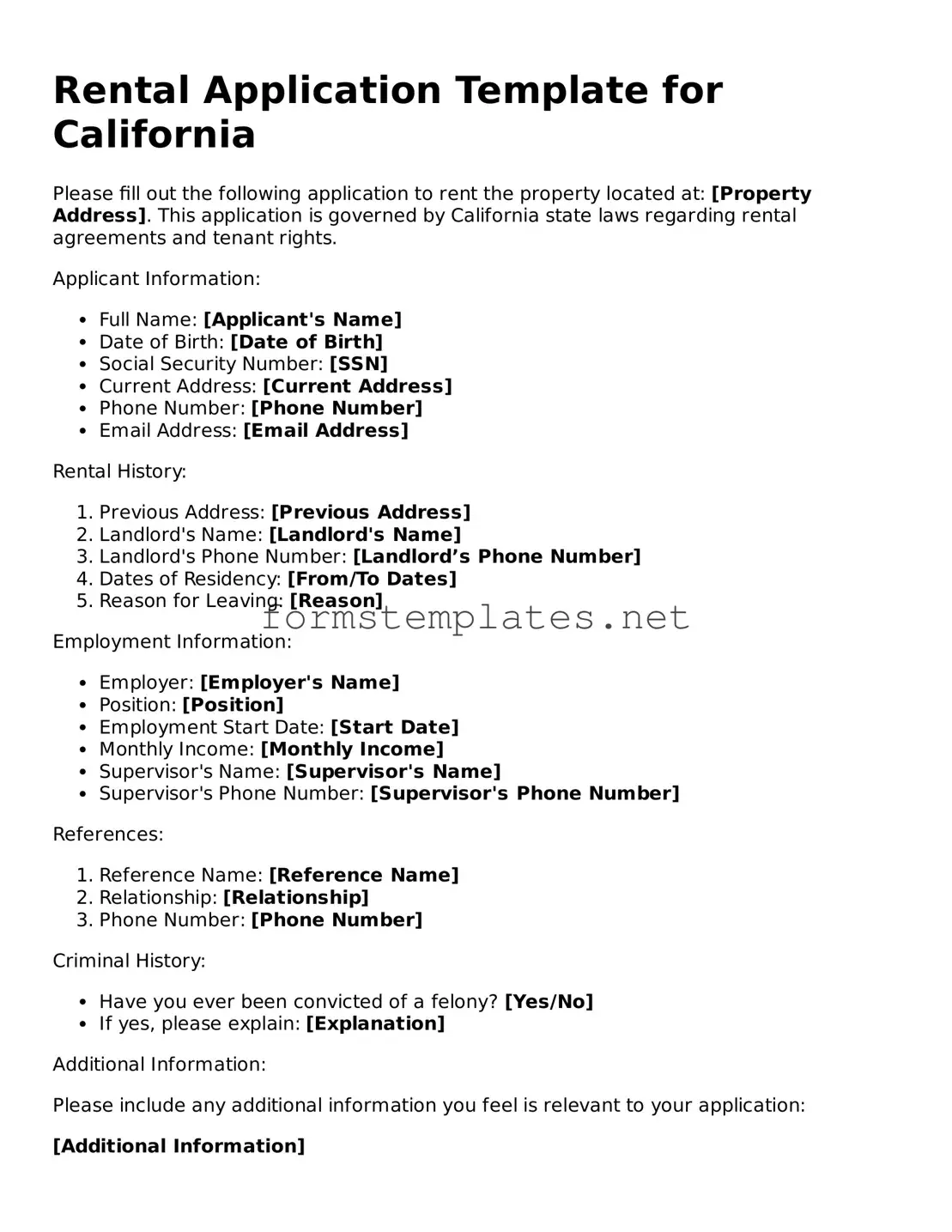Rental Application Template for California
Please fill out the following application to rent the property located at: [Property Address]. This application is governed by California state laws regarding rental agreements and tenant rights.
Applicant Information:
- Full Name: [Applicant's Name]
- Date of Birth: [Date of Birth]
- Social Security Number: [SSN]
- Current Address: [Current Address]
- Phone Number: [Phone Number]
- Email Address: [Email Address]
Rental History:
- Previous Address: [Previous Address]
- Landlord's Name: [Landlord's Name]
- Landlord's Phone Number: [Landlord’s Phone Number]
- Dates of Residency: [From/To Dates]
- Reason for Leaving: [Reason]
Employment Information:
- Employer: [Employer's Name]
- Position: [Position]
- Employment Start Date: [Start Date]
- Monthly Income: [Monthly Income]
- Supervisor's Name: [Supervisor's Name]
- Supervisor's Phone Number: [Supervisor's Phone Number]
References:
- Reference Name: [Reference Name]
- Relationship: [Relationship]
- Phone Number: [Phone Number]
Criminal History:
- Have you ever been convicted of a felony? [Yes/No]
- If yes, please explain: [Explanation]
Additional Information:
Please include any additional information you feel is relevant to your application:
[Additional Information]
By signing below, I certify that all information provided is true and complete to the best of my knowledge. I understand that any false statements may result in denial of my application.
Applicant's Signature: [Signature]
Date: [Date]
